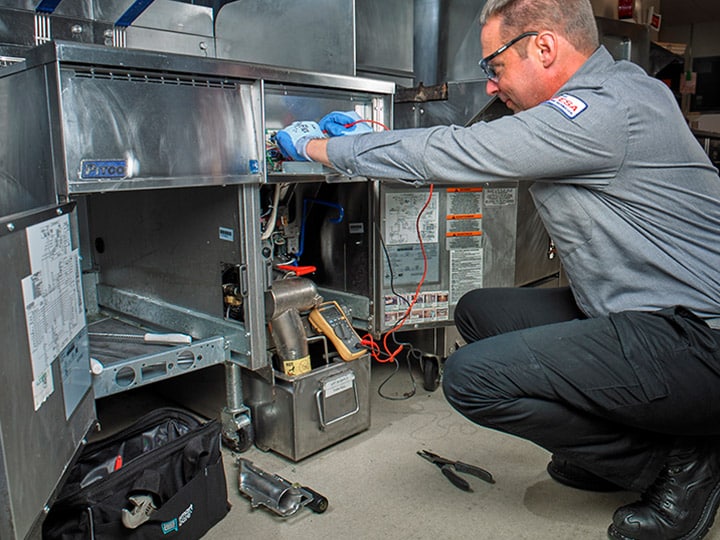How to Increase Commercial Kitchen Equipment Efficiency

Food preparation is one of the largest culprits impacting a commercial kitchen’s energy bill. Kitchen equipment, including refrigeration, water heaters, and HVAC systems, contribute over half of the energy bill in a foodservice operation.
Commercial kitchens in full-service and quick-service restaurants, hospitals and hotels, use approximately three times more energy than other commercial buildings. Kitchen efficiency is important in running a successful foodservice business. No matter the role you hold in the foodservice industry, there are affordable ways you can improve energy efficiency and reduce energy consumption.
Cost-Saving Tips to Increase Commercial Kitchen Equipment Efficiency
-
Buy Energy Efficient Equipment
The availability of Energy Star-labeled foodservice equipment is growing. Energy Star labeled equipment are deemed highly efficient by the Foodservice Technology Center (FSTC) and the Consortium for Energy Efficiency (CEE). Investing in energy efficient commercial kitchen appliances can help save water and reduce energy consumption. On average, 30 percent of the yearly budget is spent on energy. However, switching to energy-efficient kitchen equipment can save thousands per year on energy costs!
-
Buy the right sized unit for your needs to cook food quickly
Commercial kitchens serve hundreds of meals a day. Using the right sized equipment will help with food preparation.
-
Turn off unused equipment
Make sure to turn off kitchen equipment that is not in use. Continuing to run equipment wastes a significant amount of energy in commercial kitchens. This could also help prolong the life of the equipment.
-
Use proper water heating settings
First, make sure to insulate hot water lines. Check the water heater settings and make sure the setting is no higher than 140° Fahrenheit (F) (60° Celsius (C). Routinely check the pressure-relief valve and distribution system for leaks.
-
Keep warm food warm
Time is of the essence in a commercial kitchen, and so is the cooking process. Make sure to check convection ovens, steamer doors and seals. A proper seal will prevent the heat from escaping.
-
Keep cold food cold
Every commercial kitchen has refrigeration equipment such as refrigerators and freezers. Be sure to inspect freezer doors for air leaks. Check for worn gaskets and door alignment. If they have automatic door closers, make sure they close correctly. This will help improve efficiency and prolong the life of the equipment.
-
Planned Maintenance Schedule
In addition to investing in energy-efficient equipment, regular Planned Maintenance can also help reduce energy costs. Routine Planned Maintenance of ovens, refrigerators and freezers can help keep repairs costs low and prolong the life of the equipment. Deep cleaning kitchen equipment on a regular basis and checking air filters, gaskets and seals, changing as needed, can help reduce energy consumption. Create a planned maintenance calendar to track weekly, monthly, quarterly, semi-annual and annual routine maintenance checks. This includes tasks such as calibration on cooking and HVAC, lubricating seals, exhausts, bearings, and changing filters. Educate kitchen staff on how to properly use and clean kitchen equipment . This will help them become more conscious of everyday energy use; turning off cooking equipment, lights, and other kitchen appliances – thus increasing energy efficiency.
No matter how hard someone tries to improve commercial kitchen efficiency , faulty cooking equipment can slow the process. If you need commercial kitchen equipment services, Smart Care Solutions’ qualified technicians can help get you up and running with Planned Maintenance. Contact us today to learn about our Planned Maintenance and Fast Fix emergency services.
